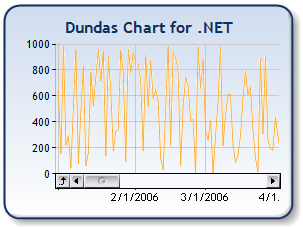Gets or sets the size of a data view.
View size.
| Visual Basic (Declaration) | |
|---|---|
Public Property Size As Double | |
| Visual Basic (Usage) |  Copy Code Copy Code |
|---|---|
| |
| C# | |
|---|---|
public double Size {get; set;} | |
Return Value
A double value that represents the size (width or height) of a view. Defaults to not being set (Double.NaN).
This property represents the width of horizontal views and the height of vertical data views (see figure below).

Figure 1: Size and position of a data view.
The Size property can be used to determine what the size is of a view when the view is created as a result of end-user zooming. It can also be used to set the size of a view programmatically. When setting the size of a view programmatically the MinSize property setting is ignored.
The size of a data view is always measured as an axis value, and the unit of measurement is set using the SizeType property.
The unit of measurement for Size is the SizeType property.
The Position property is always used in conjunction with the Size property, and determines the position of a view.
Axis label intervals (as well as tick mark and grid intervals) are recalculated automatically when zooming occurs, and ignore any previous interval-related property settings. To control how labels are displayed when the end-user zooms on data use the Axis.LabelStyle property.
IMPORTANT: To fix the position of scrollbars the plotting area position of a chart area must not be set to "Auto". To explicitly set the plotting area position use the InnerPlotPosition property.
Target Platforms: Windows 98, Windows NT 4.0, Windows Millennium Edition, Windows 2000, Windows XP Home Edition, Windows XP Professional, Windows Server 2003 family, Windows Vista, Windows Server 2008 family




